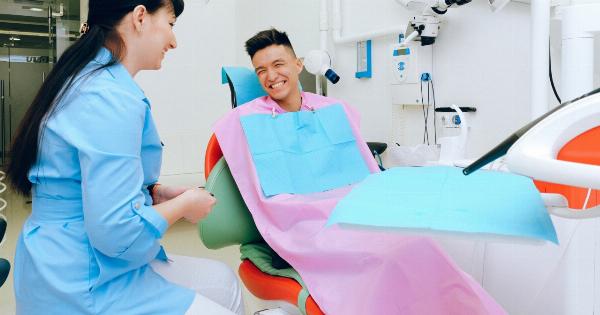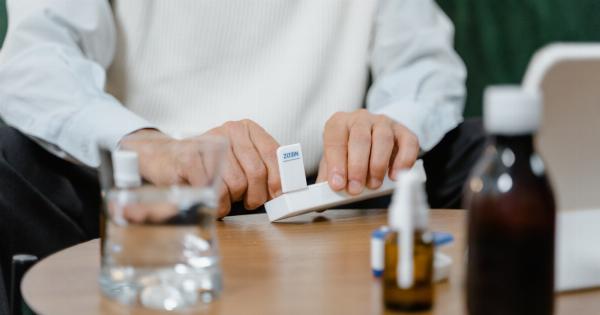Atopic dermatitis, also known as eczema, is a chronic inflammatory skin condition that causes the skin to become red, itchy, and dry. It is a common condition that affects both children and adults, and it often begins in infancy.
Atopic dermatitis can be a frustrating and uncomfortable condition, but with proper management, symptoms can be controlled and flare-ups can be minimized.
Symptoms of Atopic Dermatitis
The symptoms of atopic dermatitis can vary from person to person, but the most common symptoms include:.
- Itchy skin: One of the most prominent symptoms of atopic dermatitis is intense itching. The itchiness can be so severe that it disrupts sleep and affects daily activities.
- Redness and inflammation: The affected areas of the skin may appear red and swollen. In severe cases, the skin may even become blistered or cracked.
- Dry and scaly skin: Atopic dermatitis often causes the skin to become dry, scaly, and flaky.
- Thickened skin: Over time, the skin affected by atopic dermatitis may thicken and develop raised bumps.
- Weeping or crusting: In some cases, the skin may ooze fluid and develop crusts, particularly in areas where scratching has occurred.
Locations of Atopic Dermatitis on the Body
Atopic dermatitis can appear on different parts of the body, depending on the age of the person. Here are the common locations where atopic dermatitis may occur:.
Infants (0-2 years old)
In infants, atopic dermatitis often affects the face and scalp. The cheeks, chin, forehead, and scalp are commonly affected areas. It may also spread to the arms, legs, and trunk.
Children (2 years old to puberty)
As children grow older, the distribution of atopic dermatitis may shift. The skin folds, such as the insides of the elbows and knees, may become more affected. The wrists, ankles, and neck can also be affected.
In some cases, the rash may be present in multiple areas of the body, including the face and scalp.
Adults
In adults, atopic dermatitis often affects the hands and feet. The back of the knees and the inner elbows are also common locations for flare-ups. However, adults may experience atopic dermatitis on any part of the body, including the face and neck.
Treatment of Atopic Dermatitis
Although there is no cure for atopic dermatitis, various treatment options can help manage the condition and reduce symptoms. The treatment plan may vary depending on the severity of the symptoms and the individual needs of the patient.
Some common treatment approaches for atopic dermatitis include:.
- Moisturizers: Keeping the skin well-hydrated is essential in managing atopic dermatitis. Regular use of moisturizers helps to seal in moisture and prevent dryness.
- Corticosteroid creams: Topical corticosteroids are often prescribed to relieve itching, inflammation, and redness. They come in different strengths and should be used as directed by a healthcare professional.
- Topical calcineurin inhibitors: These medications reduce inflammation and itchiness and are commonly used in areas where corticosteroids may not be suitable, such as the face and groin.
- Antihistamines: Oral antihistamines may be recommended to relieve the itching associated with atopic dermatitis, particularly if it is affecting sleep.
- Wet dressings: Applying wet dressings or wet wraps to the affected areas can help soothe the skin and reduce itchiness.
- Phototherapy: In some cases, exposure to ultraviolet light under medical supervision can help improve symptoms.
- Immune modulators: Systemic medications that suppress the immune system may be prescribed in severe cases of atopic dermatitis.
Preventing Flare-ups
While it is not always possible to prevent flare-ups of atopic dermatitis, certain steps can be taken to minimize their occurrence. Here are some helpful tips:.
- Maintain a skincare routine: Establish a regular skincare routine using gentle cleansers and moisturizers. Avoid harsh soaps and hot water, as these can aggravate the skin.
- Avoid triggers: Identify and avoid triggers that may worsen your symptoms. These can include certain fabrics, household cleaning products, heat, sweat, and certain foods.
- Manage stress: Stress can trigger or worsen atopic dermatitis. Find healthy ways to manage stress, such as exercise, meditation, or talking to a therapist.
- Keep nails short: Trimming your nails short can help prevent excessive scratching and further damage to the skin.
- Avoid tight clothing: Wear loose-fitting, breathable clothing that doesn’t rub against the skin.
- Use fragrance-free products: Fragrances in skincare products and detergents can irritate the skin. Opt for fragrance-free options.
- Stay hydrated: Drink plenty of water to keep your skin hydrated from the inside.
Conclusion
Atopic dermatitis is a chronic skin condition characterized by red, itchy, and dry skin. It can affect people of all ages, but it often begins in infancy.
While there is no cure for atopic dermatitis, proper management and treatment can help control symptoms and minimize flare-ups. By following a skincare routine, avoiding triggers, and seeking appropriate medical care, individuals with atopic dermatitis can lead more comfortable and enjoyable lives.































